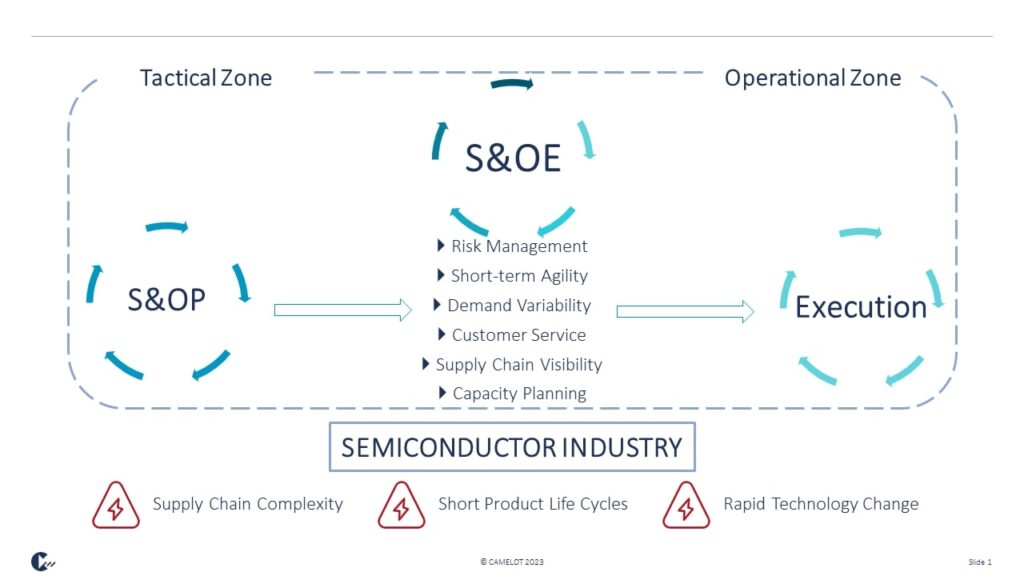
AI-Driven Application & Process Testing: Embracing Agentic Testing
Learn how Agentic AI enables digital transformation, delivering true hyperautomation.
Sales and Operations Planning (S&OP) is a high-level strategic planning process that helps semiconductor companies balance demand and supply for their product portfolios focusing on 12-18 months. S&OP brings together cross-functional teams, such as sales, marketing, finance, and production, to develop a unified plan based on demand forecasts and operational capabilities.
Sales and Operations Execution (S&OE) on the other hand focuses on the short-term horizon, typically covering the next few weeks to months. S&OE plays a crucial role in the highly dynamic semiconductor industry, which is characterized by rapid technological advancements, short product lifecycles, and intense competition by bridging the gap between high-level strategic planning and day-to-day operations.
S&OP is mostly monthly or quarterly planning involving the following aspects:
In contrast to S&OP, S&OE is a weekly planning process, which bridges the gap between S&OP and execution by providing solutions to the problems occurring in the short term.

Sales and Operations Execution (S&OE) is indispensable for the semiconductor industry due to its ability to provide real-time visibility, agility, and decision-making capabilities necessary to thrive in a highly dynamic and competitive market. It enables semiconductor companies to meet customer demand, optimize production, manage supply chains efficiently, and control costs while ensuring customer satisfaction.

Learn how Agentic AI enables digital transformation, delivering true hyperautomation.

Reimagine resilience and proactively minimize supply chain risks

This article shall help you to understand how to optimize your inventory positions in a month – or even less.

Modern PLM systems empower businesses to achieve product excellence in fast-paced markets by enhancing collaboration, agility and innovation.
© Camelot Management Consultants, Part of Accenture
Camelot Management Consultants is the brand name through which the member firms Camelot Management Consultants GmbH, Camelot ITLab GmbH and their local subsidiaries operate and deliver their services.